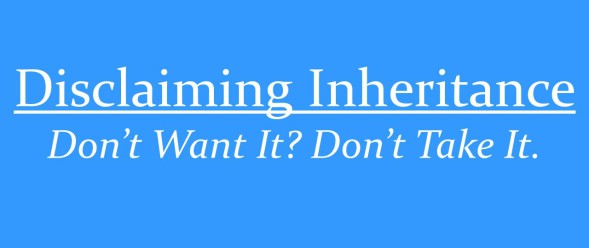Disclaiming Inheritance
March 19, 2021
You’ve inherited property. You don’t want it. What do you do?
Simple! Disclaim it!
Unfortunately, it’s not that simple – there are still specific rules and requirements, but disclaimers are done all the time, and you can do it, too.
Why Disclaim?
Disclaiming property goes beyond simply “not wanting” a piece of property. Most people disclaim to avoid tax liability or creditors – or, because they would prefer the property go to a different heir. Disclaiming changes who possesses the legal right to the property. The Disclaimer is used to accomplish a purpose the disclaimant deems more desirable than receiving the property him or herself, such as:
- Avoiding current and future taxes
- Protecting family funds from the disclaimant’s creditors
- Placing the property in “better hands”
- Ensuring assets go to whom the decedent wanted, if the decedent failed to update his or her will
- Allowing a surviving spouse to take advantage of qualified plan benefits and IRAs
Disclaiming an inheritance applies only to the specific property disclaimed – people can disclaim part of an inheritance without sacrificing everything.
Rules
Disclaimer rules are straightforward, but must be followed strictly. To make sure your disclaimer is successful, you must:
- Never accept any benefits of the property being disclaimed. For example, if a set of chairs is delivered to Jane’s home, and she decides she does not want them, it is too late – the delivery is acceptance of the property.
- Send a disclaimer to the executor of the estate within 9 months of the date of death (or after the disclaimant turns 21 years old).
Who Gets the Disclaimed Property?
The Disclaimant does not get to decide to whom the disclaimed property is transferred. Where the disclaimed property goes depends on how the property was titled and how it was inherited (through joint tenancy? as a stated benefit? in a will? intestate?). The disclaimed property will distribute as if the disclaimant had died before the decedent.
A disclaimer is a useful tool. No one can be forced to accept property they do not want. If you find yourself wishing to use a disclaimer, speak with a lawyer.
Contact Strzalka Law Office at StrzalkaLaw@MASLawOffice.com or call us at 773-631-9215.



